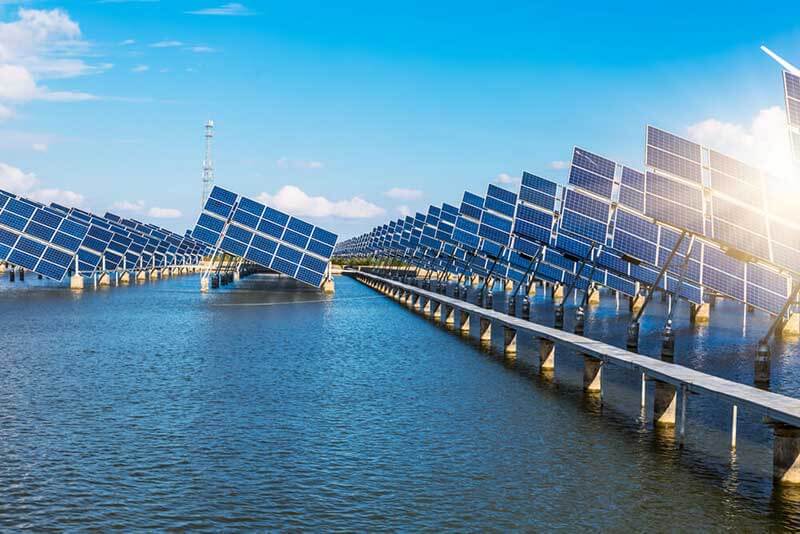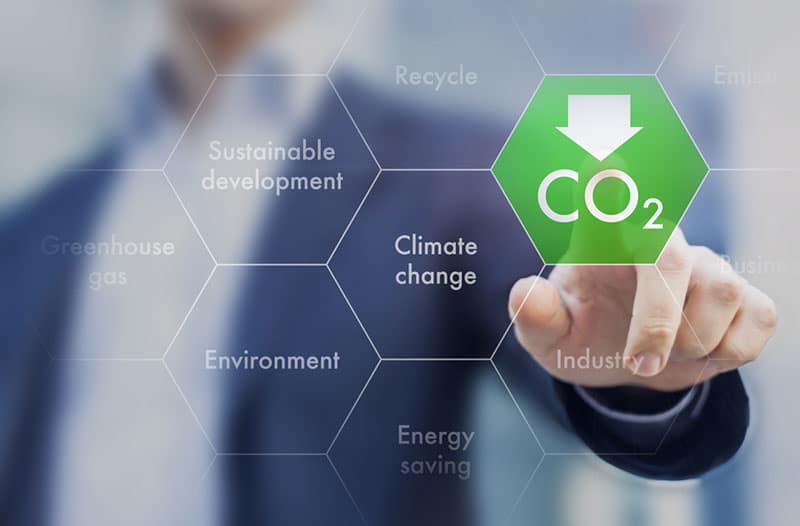- Wind power on steroids to derive maximum power from every breeze
- Arizona’s futuristic water → mist → air → wind project
- Beaming down solar energy from outer space
- Volcanoes to power the world – harnessing energy from the middle of the earth
- Giant solar tulips to power parts of Spain, Israel and Ethiopia
- Could controlled nuclear fusion be the holy grail of clean energy?
The current rate at which we use fossil fuel will see us hitting an energy crisis within a century. In order to survive or rather avoid this crisis, many companies are inventing new ways to extract energy from renewable sources such as wind power, solar power and water power. Engineers and scientists are developing combinations of these renewable energy sources which haven’t been used simultaneously before. They are also exploring completely new sources, in order to generate power that is even more sustainable and more efficient. Solar and wind power combined, power from space, giant solar power generating tulips and even geothermal energy are some of the new ways of generating energy to power our future.
Wind power on steroids to derive maximum power from every breeze
With advances in turbine blade designs, initially developed through aeronautics technology, we will see huge new developments in wind energy in the next 25 years – deriving maximum power from each breeze. Since offshore wind energy is proving to be extremely effective, due to more consistent and stronger winds, turbines will also move more and more offshore. Denmark has for instance already shown us their 111-turbine Anholt wind farm that provides around 1.30 gigawatts of power – enough for over one million households – and there are many more offshore wind power projects in the pipeline. The newly proposed UK offshore wind farm, situated approximately 120 kilometres off the coast of Yorkshire, will be the largest in the world; occupying over 400 square kilometres. The project is hugely significant and will play a vital role in the UK’s need for low-carbon energy. The energy infrastructure, fit for the 21st century with the capacity to power more than one million households, will create an estimated 2.000 jobs for its construction and a further 300 jobs to operate the wind farm.
Arizona’s futuristic water → mist → air → wind project
Plans are underway to construct a massive 682 metre-high energy generating tower in the Arizona desert. It will be the world’s second highest structure and will generate clean power in quite an unusual way. A series of pumps sends water to the top which is sprayed into a tunnel in the tower, creating a mist. Exposure to the hot desert air causes the mist to become heavy and turn to drops that fall down through the tower. By the time the water reaches the bottom, at speeds of 80 kilometres per hour, it creates a draft effect which runs the turbines at the base of the tower. The proposed energy tower will run continuously as there will be no intermittency problems. All the tower needs to continue creating these draft effects is hot air. The plant itself would run on its own generated energy: 11 percent of the tower’s energy output would be used to pump the water back to the top and 75 percent of the water would be collected at the base of the tower.

Beaming down solar energy from outer space
Plans are underway to build space-based solar power plants to capture solar energy that would otherwise bypass the Earth. Solar power farms are essentially giant satellites with various solar collectors, transmitting energy to Earth in the form of microwaves or laser beams. In one hour, more solar energy reaches the Earth than is used by humanity in an entire year. In space, solar panels would collect solar energy directly from the sun without environmental interference and beam it back to earth. Solar plants like these are basically enormous mirrors, reflecting the rays of the sun to smaller satellite collection points which would send the energy to Earth bit by bit – in the form of microwaves or laser beams. In March 2015, Tokyo-based Japan Aerospace Exploration Agency (JAXA) announced that they wirelessly transmitted 1.8 kilowatts of power to a small receiver, 50 metres away, by converting electricity to microwaves and back to electricity again – enough to power a small electric kettle. Jaxa is planning the construction of sunlight gathering panels and antennae at about 36.000 kilometres from the Earth. It could however take decades before practical applications of this technology will be available as there are various challenges which need to be eliminated. These challenges mainly revolve around the construction and maintenance of the huge structures in space.
Volcanoes to power the world – harnessing energy from the middle of the earth
Geothermal energy comes from the boiling core of the Earth and holds huge promise for a future powered by renewable energy. Unlike solar or wind power, geothermal energy is always available. But how do we get to it? Deep underground, radioactive elements such as potassium, thorium and uranium are broken down, generating heat and creating a kind of nuclear reactor. Over the last decades, scientists have been harnessing this heat through the drilling of wells. Researchers have now however managed to drill into areas close to volcanoes, tapping into even greater energy by using the heat of magma. At the Newberry Volcano project site in Oregon, Davenport Newberry Holding and AltaRock Energy, backed by the DOE, Google and others, will be pumping millions of litres of water under high pressure into wells which are 3 kilometres deep. Underground, this water will create crevices and channels to maximise the exposure of the water to the high-temperature magma. The scolding hot groundwater will then come back above ground where it is converted to steam to power turbines. The resulting electricity will then be delivered to the main power grid. Although geothermal power sounds like the ideal solution because it is inexhaustible and natural, a power plant on top of a volcano is also very dangerous. A drill rig could unexpectedly hit a high-pressure steam zone which could lead to explosions, spewing toxic gases such as hydrogen sulfide into the air. Also, pumping water into the ground close to a volcano could increase the chances of seismic activity. Independent studies have however indicated that the possible induced seismicity would not be more than a nuisance and no hazard to residents because of the sites’ distance from population centres.
Giant solar tulips to power parts of Spain, Israel and Ethiopia
AORA Solar recently announced the construction of its first solar-biogas power plant in Ethiopia in the middle of 2015. The Hybrid System consists of a tulip shaped tower with a lens in the bulb which receives concentrated solar beams, reflected off fifty mirrors that continuously follow the rays of the sun. The water stored in the bulbs heats up to extremely high temperatures and the resultant steam is used to power a turbine generator which generates electricity. This unique and impressive solar-hybrid technology is perfectly suited to provide energy to support local economic development in rural areas in Ethiopia that are off grid. AORA already has various active sites in Israel and Spain. At night or when the weather is cloudy, the turbine of the tower switches to biofuels to ensure continuous energy production.
Could controlled nuclear fusion be the holy grail of clean energy?
Nuclear fusion is what powers the sun and all of our stars. It is the most basic form of energy in our universe. Fusion energy generates power when hydrogen reaches temperatures of around 100 million degrees Celsius. It isn’t actually renewable energy but still a potential future power source to be reckoned with. This type of fusion energy is not to be confused with the uncontrolled fusion reaction used to create the hydrogen bomb; uncontrolled fusion causes all the energy to be released at once, leading to untold destruction. If we are able to release the same amount of energy through controlled fusion, however, it could provide us with the ultimate form of energy on Earth. Engineers and scientists in Saint-Paul-lez-Durance, a large nuclear research facility in Cardache, France, are designing a fusion power plant – a star in a box – the first in the world fusion reactor that will produce controlled nuclear energy. In magnetic confinement systems, positively charged hydrogen atoms are stripped of electrons and fused to produce helium. This controlled fusion then produces unlimited, carbon-free energy without dangerous nuclear waste. The project site, known as Iter (International Thermonuclear Experimental Reactor), is as large as 60 soccer fields and is estimated to start producing energy in 2027.
Alternative energy will be at the heart of a boom larger than information technology ever was
Today, the pressure to find alternative and renewable energy sources is greater than ever before and more energy is needed all around. Some predict we are heading towards a solar powered future while others see us moving towards a hydrogen economy. Other possibilities include sky-high wind turbines. The future will likely see us using power from various sources, all of them promising clean, renewable energy. As all these alternatives are starting to roll out, their rise will become inescapable. Armies of engineers will tweak these alternative initiatives to make them better and more affordable. Alternative energy will be at the heart of a boom larger than information technology ever was.








